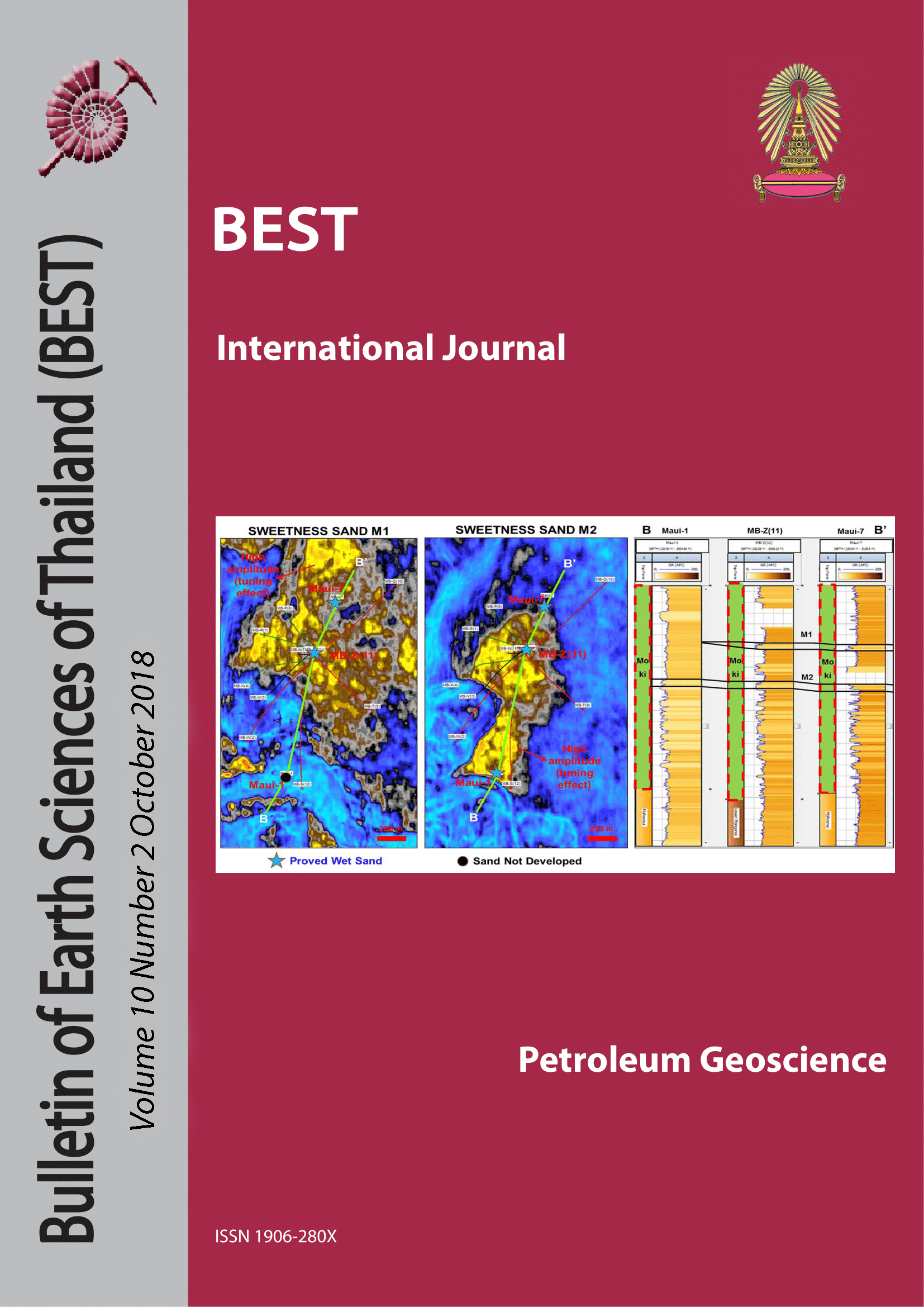SEQUENCE STRATIGRAPHY ANALYSIS USING SEISMIC SEDIMENTOLOGY AND ATTRIBUTES TO IDENTIFY POTENTIAL RESERVOIR IN SOUTHERN ROVUMA BASIN, OFFSHORE MOZAMBIQUE
Main Article Content
Abstract
Understanding sequence stratigraphy by applying seismic attributes can contribute for a better knowledge of the basin evolution and to predict possible hydrocarbon bearing zones, over the southern Rovuma Basin Mozambique offshore. The study comprises sequence stratigraphic analysis to determine stratigraphic architecture within 3 to 5 seconds of the 3D seismic. The seismic reflections in the 3D volume can be used to map structures and amplitude patterns that are interpreted to determine the prospective areas of having hydrocarbon bearing potential zones. The 3D seismic cube observations and analyses were integrated with one well data located approximately 80 Km to the North East direction. The well was matched with the 3D seismic by using 2D regional seismic lines to improve the well tie to the seismic. Analysis of the stratigraphic sequences in the study interval identified 3 megasequences S2, S3 and S4, bounded by SB1, SB2, SB3 and SB4 respectively. Significant potential hydrocarbons bearing zones for exploration successes in the study interval were identified on isolated carbonates buildups ICB’s described as having developed a during transgressive when accommodation was greater than sediment supply. This resulted in a retrogradational coastal trajectory at the base of S4, and progradational features that indicate highstand deposits and sediments supply from North direction on the top of sequence 4. Migration pathways are related to faults that act as likely fluids conduits from lower to upper sequences. Sequences 3 and 4 are the potential reservoirs, source rock are associated to the deepest sequence. Good quality sand reservoirs are focused to paleogeomorphologic features identified by seismic attribute analysis integrated with depositional environment studies to predict the spatial distribution and quality of these reservoirs.
Article Details

This work is licensed under a Creative Commons Attribution-NonCommercial-NoDerivatives 4.0 International License.
Copyright © 2008 Department of Geology, Faculty of Science, Chulalongkorn University. Parts of an article can be photocopied or reproduced without prior written permission from the author(s), but due acknowledgments should be stated or cited accordingly.
References
Baetzel, M.; Franke, D.; Heyde, I.; Schreckenberger, B.; Jokat W.; The Davie Ridge, Northern Mozambique: The Crustal Structure from Wideangle Seismic Data. American Geophysical Union, Fall Meeting 2015, abstract id. T51F-2984
Burgess, P.; Winefield, P.; Minzone, M.; and Elders, C.; (2013) Methods for Identification of Carbonates Buildups from seismic reflection data. APPG Bulletim, V.97, N.7 (July 2013) PP.1071-1098.
Chiulele S.; Middle Cretaceous Reservoir Characterization and Depositional Environment of Central Rovuma Basin, Offshore Mozambique, Using Seismic Attributes and Well log Analysis (2016).
Chopra, Satinder and Marfurt, K.J (2007).; Seismic attributes for prospect identification and Reservoir Characterization.
ENH and ECL, 2000.; The Petroleum Geology and Hydrocarbon Prospectivity of Mozambique (2000) Volume 1
Mahanjane E.; 2014. The Davie Fracture Zone and adjacent basins in the offshore Mozambique Margin - A new insight for the hydrocarbon potential; Marine and Petroleum Geology Research paper No. 57
Salman, G.; and Abdula, I,; 1994. Development of Mozambique and Rovuma Sedimentary Basins, Offshore Mozambique. Elsivier Sedimentary Geology 96 (1995) 7-41
Veeken, J.; and Van Moerkerken, B.; 2013. Seismic Stratigraphy and Depositional Facies models: EAGE and Elsevier Scientific Publisher. P. 107-213.


